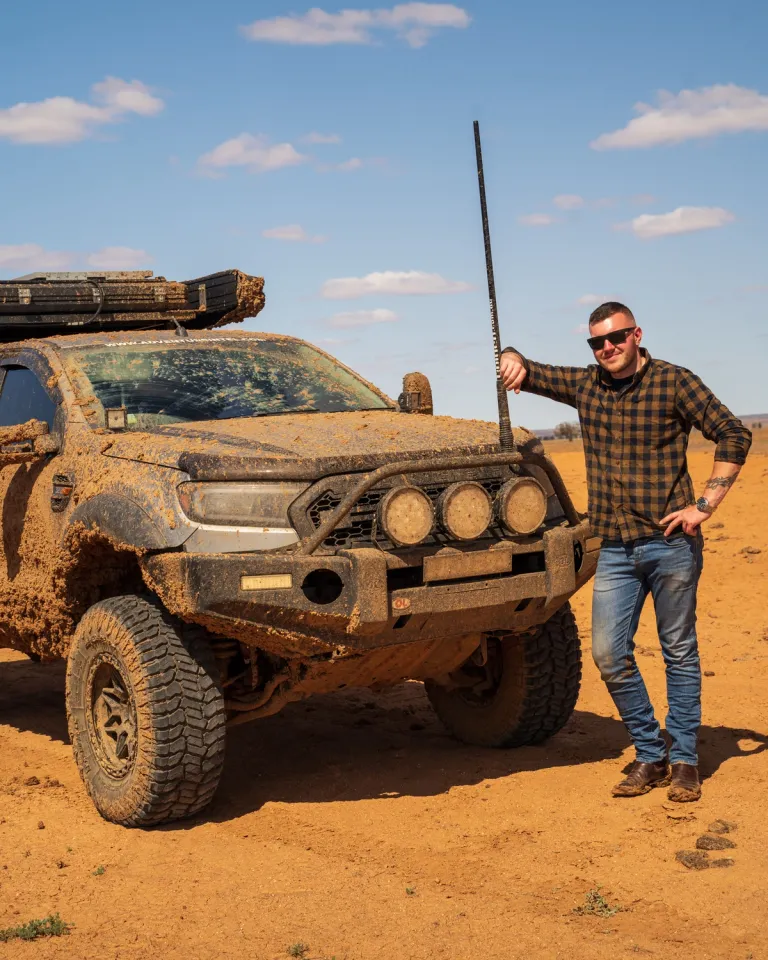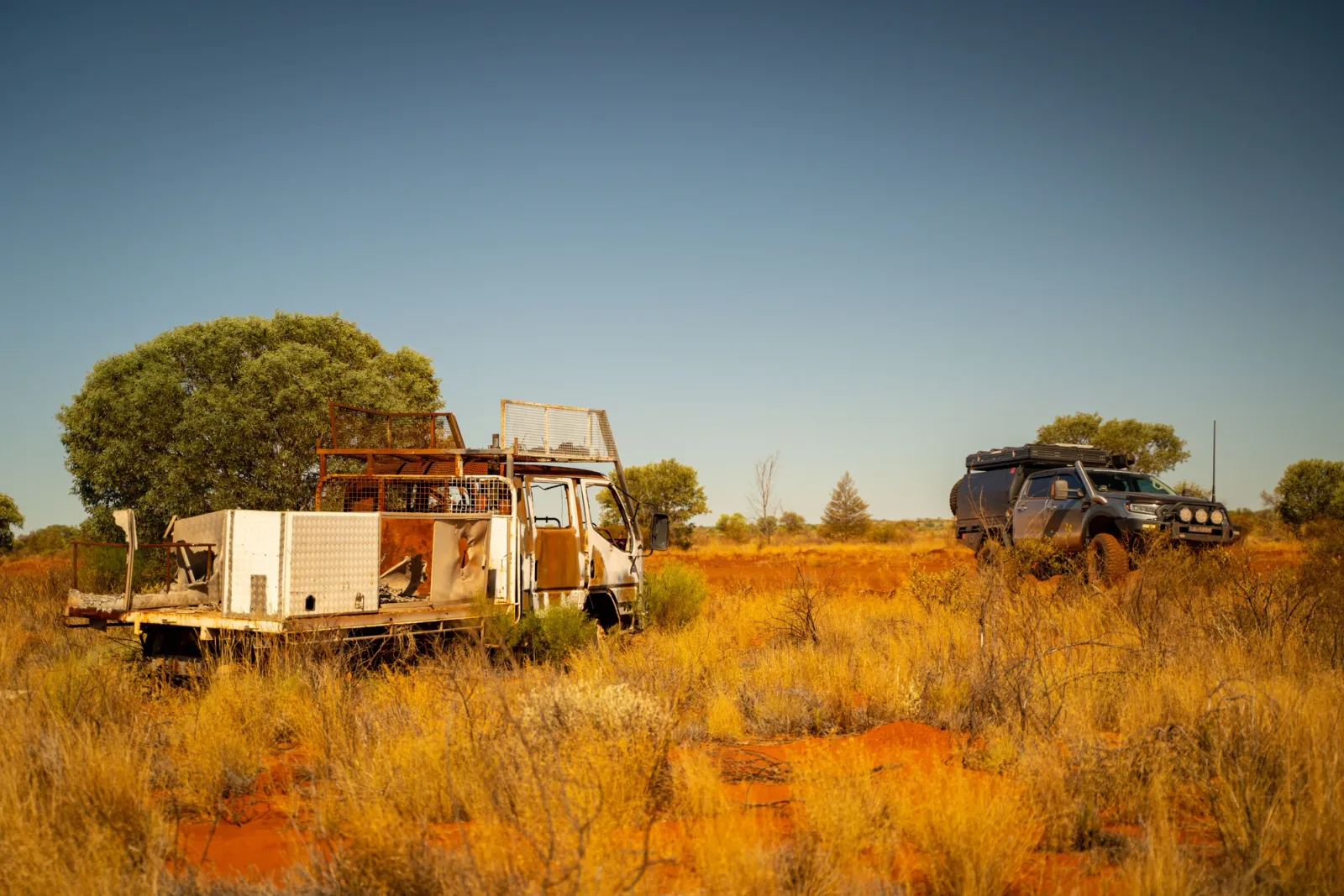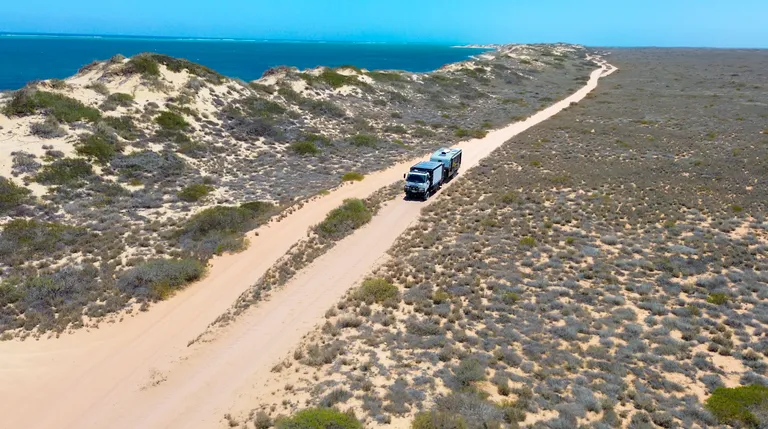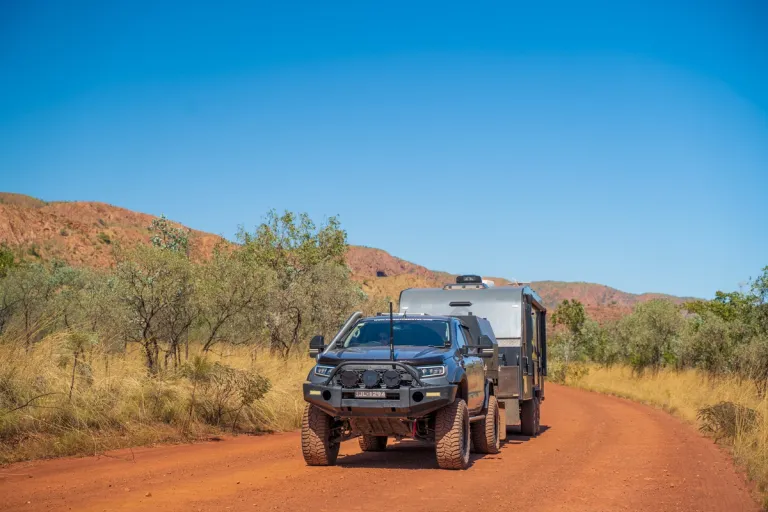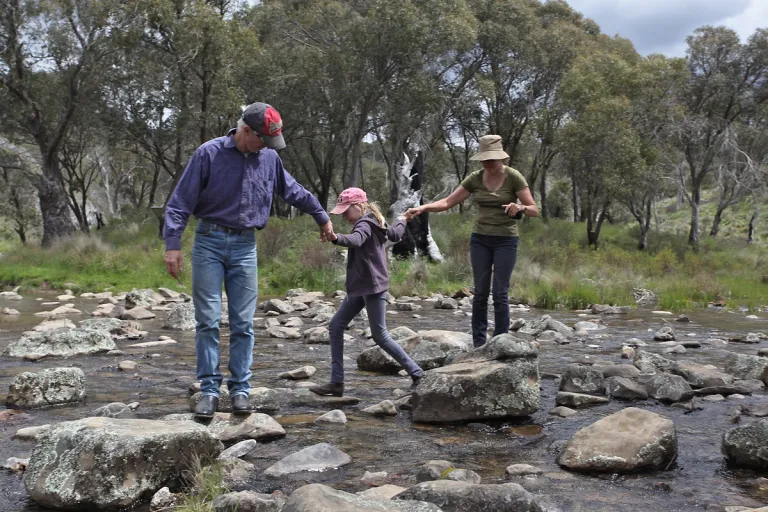Let’s get one thing straight, heading remote isn’t the same as heading bush for the weekend. Once you’re off the bitumen, hundreds of kilometres from the nearest roadhouse, and well outside phone range, everything changes. Your gear stops being for show and starts being the thing that might get you home in one piece.
I’m talking about real remote travel. The Canning, The Simpson, Anne Beadell, and Gunbarrel sort of country, where a minor mechanical issue can become a full-blown situation if you're unprepared. And let me tell you, when things go sideways out there, it’s not your forty-seven million lumen light bar or your paint protection film that’ll get you out of trouble. It’s the boring, overlooked, unsexy stuff that actually keeps you going.
So here it is, the gear that actually matters when the pressure’s on. Not the accessories that look good in a carpark, but the gear that saves trips, saves vehicles, and sometimes, saves lives.
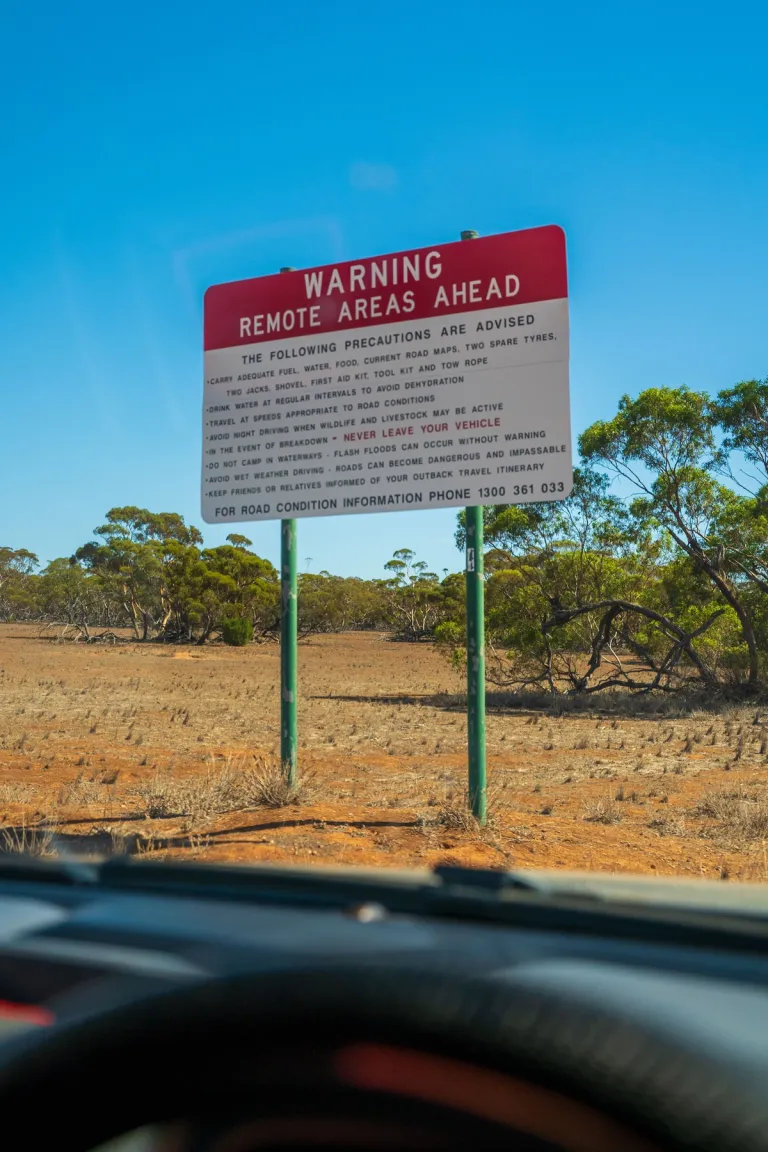
remote travel australia
1. The Right Redundancy
When you’re off the map and hours from help, redundancy isn’t about hauling doubles of everything around the nation, it’s about having a fallback when something critical fails.
A compressor is essential, but they can die, so it may pay to pack a simple foot pump. Tyre repair gear is non-negotiable, plugs, patches, valve cores, and the knowledge of how to use them could save your bacon.
Navigation’s another one. Your GPS will be brilliant, right up until it isn’t. A set of paper maps and a compass are low-tech, but they always work. Just make sure you actually know how to read a map, before everything counts on it.
Water systems fail too. Tanks split and fittings come loose. Carry water in multiple containers, not just one big tank. And always have purification tablets or a small filter on hand in case you need to refill from questionable sources.
Electrical systems are often the first to go in tough conditions. Set your vehicle up to charge from both alternator and solar, carry spare fuses, and pack a multimeter. When your fridge, lights or comms go dark, you want to be able to diagnose, not guess. And ask yourself, what’s your plan if the fridge goes down and you can’t fix it?
Lastly, comms: a UHF is fine for convoy chatter, but out where reception dies, a sat communicator or PLB is your only real safety net.
2. Self-Recovery Over Spectacle
A shiny winch on the bullbar looks great in a photo. But without rated recovery points, proper straps, and the know-how to use them safely, it’s more decoration than solution. What matters is having a complete self-recovery system that works when you’re alone, with no one around to pull you out.
The non-negotiables for remote solo travel:
- Rated recovery points front and rear, bolted to chassis, tested, and trustworthy.
- Rated Recovery gear: Two long straps, shackles, a snatch block, cable dampeners and a tree trunk protector a minimum.
- Recovery Boards: Yes, they’re bulky, yes the good ones are pricey, and yes, they work.
- A shovel: Still the most used recovery tool in Australia. Also doubles as a pan and a toilet-builder.
- A winch: Useful, but only if you’ve learned to use it before you need it. Practice locally before you need to use it in anger.
If you’re travelling solo and relying on a winch, remember: you’re recovering yourself. That usually means anchoring to a tree, rock, or buried spare. Set up for that, or don’t rely on it.
3. Tyres, Tyres, Tyres
In the Aussie deserts and outback, tyres are going to be your weak point. One bad decision, wrong pressure, sharp rock or stray tree root and you're slicing sidewalls and chewing through spares like skittles.
So here’s the rule: run the right pressures, carry a proper repair kit, and take two spares. Yes, two. Remote tracks eat tyres, and one flat is usually never where it ends (ask me how I know).
4. Electrics That Don’t Panic in the Heat
4WDs that’ve been set up for touring are rolling power houses, DC-DC chargers, lithium batteries, fridges, induction cookers, satellite internet... the works. And when it all works, it’s beautiful. But when one wire melts or a fuse goes, the whole lot can go dark.
Remote travel needs a power system that’s simple, safe, fused, and diagnosed at a glance. You don’t need a 3000W inverter and four touchscreens. You need reliability.
What matters:
- Manual circuit protection you can reset or swap on the road.
- Visible fuses and good cable management.
- Proper earthing and quality terminals, not no-name kits with mystery wires.
- A voltmeter or battery monitor that gives you useful, not gimmicky, info.
Always carry the appropriate fire extinguisher and pack spares: fuses, cable ties, crimp connectors, a multimeter, and a basic understanding of how it all works. Blowing a fuse shouldn’t end your trip early.
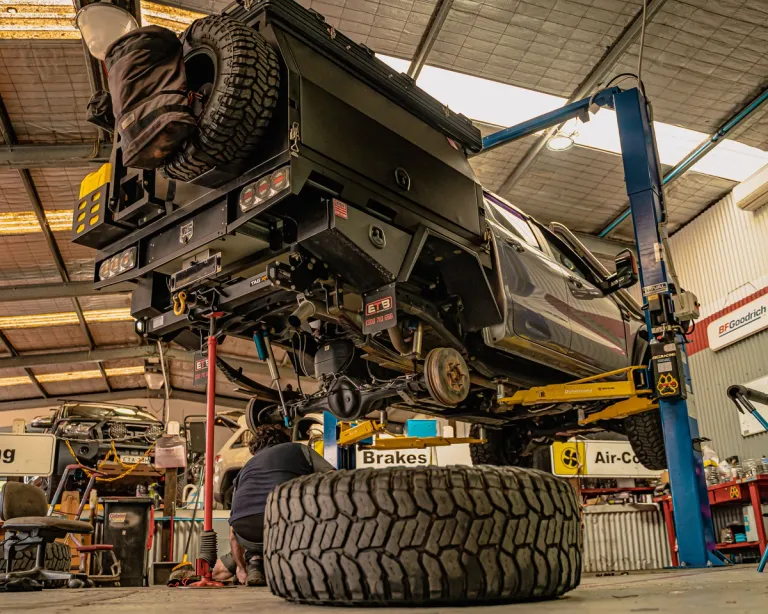
4wd preparation and maintenance
5. Fuel, Water, and Range
Too many people put blind faith in the dash readout and trust average consumption figures as gospel, assuming there’ll be fuel or water when and where they need it. The fact is: Fuel stops close early, run dry, or simply don’t exist where they used to. Water can be even less forgiving.
Planning your range isn’t about rough estimates, it’s about knowing what your rig burns, loaded, aired down, and crawling in low range. Your highway average means nothing on corrugations or soft sand. If you’re calculating based on best-case numbers, you’re already behind.
My advice? Always build in margin. Carry at least 20% more fuel than you expect to need, and store it in ways you can access safely. That means properly mounted jerry cans or auxiliary tanks, not loose tins bouncing around in the tub.
As touched on earlier, water should be isolated and spread across multiple containers, not stored all in one tank. If something leaks or fails, you want the rest to stay sealed. Purification tablets or a compact filter are essential in case you need to top up from an unreliable source in a real emergency.
The key is this: plan your range based on the worst day, not the best. If your numbers are tight, you’re not ready to go.
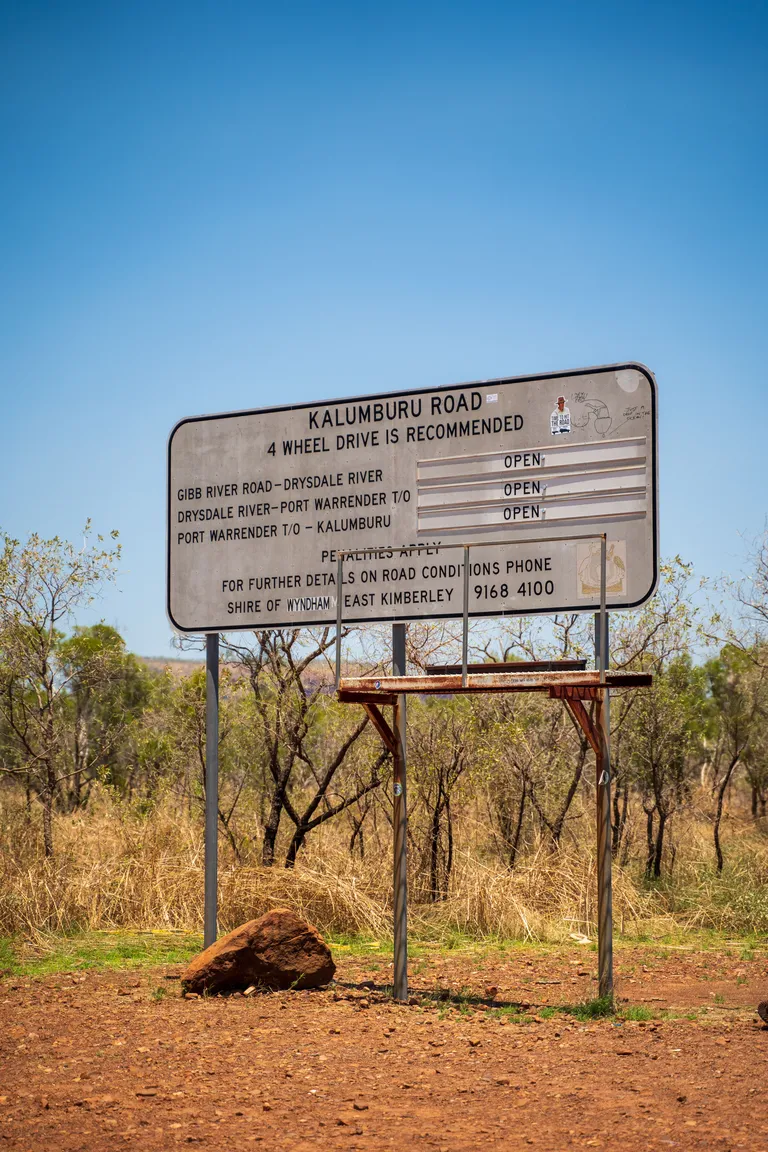
carry extra supplies and be prepared outback off grid travel
What Gets You Home
Remote travel strips away the gloss. You find out pretty quickly what gear actually works, what mods were worth it, and what was just weight for the sake of it. It’s not about how much you’ve spent, it’s about how well you’ve thought it through.
So build for when things go wrong. Not because you're unlucky, but because that's what remote touring demands. Preparation isn't pessimism, it's just respect for the country you're driving through. If you're ready to go remote, make sure your rig is too.
And make sure your insurance goes there too
Club 4X4's comprehensive insurance covers you anywhere you can legally go in Australia

